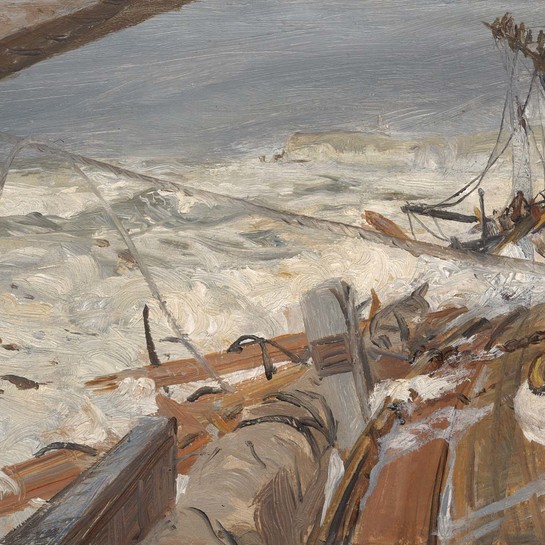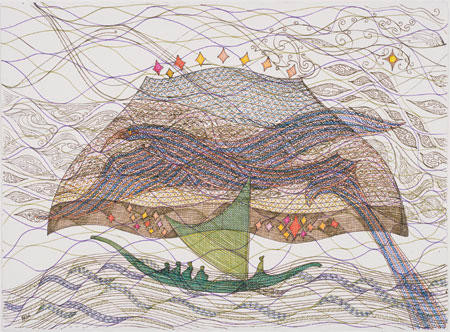John Bevan Ford
Aotearoa New Zealand, b.1930, d.2005
Ngāti Raukawa Ki Kapiti,
Māori
Reading the Swell
- 1993
- Pigmented inks
- Purchased, 1994
- 570 x 770mm
- 94/06
Tags: animals, birds (animals), boats, canoes, koru (pattern), Māori (culture or style), patterns (design elements), sails (equipment), seas, spirals (geometric figures), waka
Polynesians are renowned for their navigational skills at sea. Reading ocean swells played an important part in this, particularly when the stars, moon, planets and sun were obscured by clouds. Swells form distinctive patterns on the open oceans according to prevailing winds and waves bouncing back on themselves when they reach land. In John Bevan Ford’s drawing, a small canoe rides the ocean’s swell; above, the seafarers are protected by an outstretched cloak. The soaring amokura (also known as a bosun bird or tropicbird) symbolised for Bevan Ford the migration of Polynesian people across the Pacific Ocean. (Reading the Swell 3 September 2016 – 6 February 2017)
Exhibition History
This work focusses on the early Polynesian navigators tracing, with traditional lines and patterns, the small canoe, the ocean swells, the winds and storms which disrupted the smooth sailing of the early migration. They forced the early navigator to learn to read beneath the ocean surface. Sheltered under the spreading Maori cloak which is closely woven with fine harakeke fibres, is the read-tailed Amokura. The clock, besides displaying the skill of the weaver and the rank of the weaver, is also used here to symbolise tradition and protection. In "Reading the Swell" the navigators are both sheltering under the cloak and carrying its mana.

